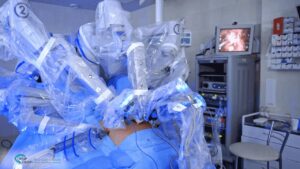This article was first published on Computer Vision News of May 2022.
Vatsala Sharma is a third-year PhD student at the Indian Institute of Technology in Bombay. Vatsala and her colleagues have just won the Best Paper Award at ISBI 2022 for their work “Semi-Supervised Deep Expectation-Maximization for Low-Dose PET-CT”, proposing a new system for low-dose PET-CT image enhancement in the case of limited data availability. Vatsala speaks to us about their acclaimed research.
Patients are subject to radiation during the scanning process for both PET and CT. If someone needs multiple scans over their life, this can be detrimental to their health. Using low-dose PET-CT imaging reduces the health risks associated with radiation. However, noise and other undesirable artifacts can reduce the quality of images when scanning at low doses.
This work proposes using semi-supervised learning to overcome this, with a solution based on deep learning, developed using Python and the PyTorch library.
Vatsala explains that the work had many different parts, and to make it more robust, the team each worked individually on separate sections before trying to make the whole thing fit together. Did they succeed the first time?
“Definitely not on the first try!” she laughs. “When you’re focusing on the bigger picture, sometimes you miss simple things like small errors in your script, and then after speaking to your co-authors, you realize you’ve made a silly mistake. For example, I got an order number error in my code, and I couldn’t understand why, but it was simply because of the way I was calculating a probability value. There was a lot of back and forth between us!”
Winning a Best Paper Award is an outstanding achievement, especially as this was Vatsala’s first oral presentation at a big conference. Congratulations! What does she think convinced the jury?
“I think it’s the novelty of combining traditional statistical approaches with more modern techniques,” she tells us.
“Expectation-maximization is a very old technique used in different fields over many years. We’re combining that with the far more recent field of deep learning.”
Despite living in India, Vatsala presented her work virtually as she could not travel to Kolkata due to issues related to the pandemic.
“With a hybrid conference, you have to prepare your talk in advance, so I had plenty of time to go over my notes and all the work we had done,” she says.
“Obviously, there were some nerves before the presentation started, but I was well prepared!”
Thinking about the next steps for this work, whilst this paper is focused on PET and CT, she would like to explore whether the framework could work for other problems, both within and outside of medical imaging, and if it could be extended to non-vision tasks.
In terms of her own future, Vatsala says she is still pondering what to do once she has completed her studies.
“As a PhD student here, my work is divided into two,” she points out. “Research – working on these new concepts and figuring out problems – and being a teaching assistant.”
What if she had to pick one?
“I would choose research,” she reveals. “Even in academia, many researchers also teach, but I think research is the most enjoyable part!”
Keep reading the Medical Imaging News section of our magazine.



